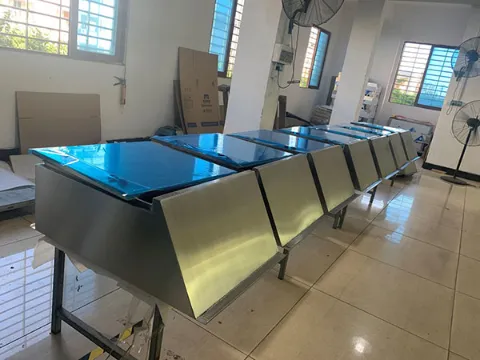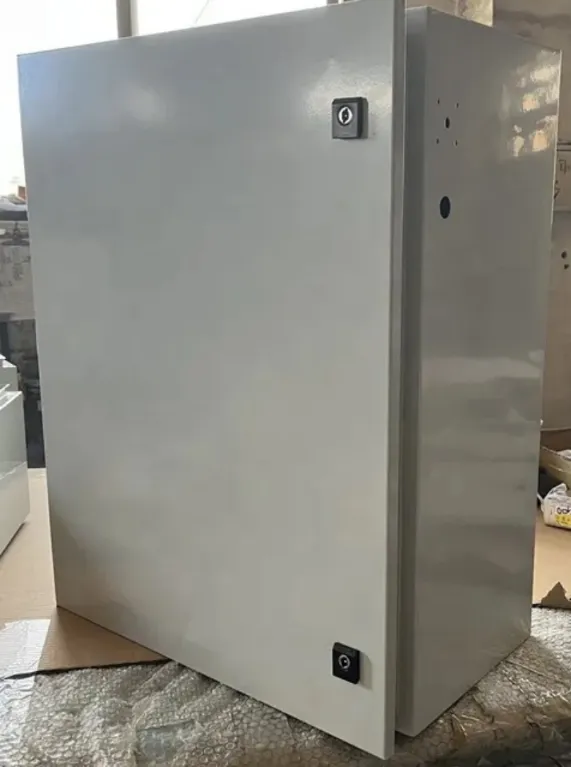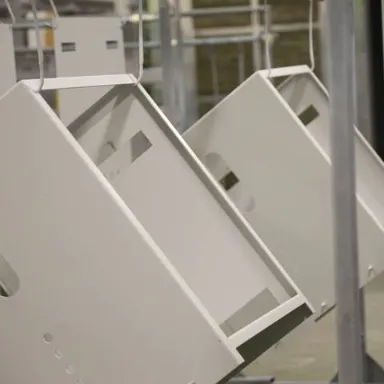Industry Spotlight: Sheet Metal Fabrication for the Medical Industry
Time : Oct 09, 2025 View : 79

Introduction
The medical field asks for very high standards. Every tool, frame, or cover must be safe, solid, and easy to keep clean. In this area, sheet metal fabrication has become a major process. It helps hospitals, labs, and makers of devices get parts that are tough, light, and shaped to match their needs. From stainless trays used in surgery to aluminum shells for scanners, sheet metal shows up in almost every corner of healthcare.
One big reason for this wide use is flexibility. Flat sheets of steel, aluminum, or copper can be cut, bent, welded, and polished into many different forms. Steps such as cutting, forming, and joining let engineers create parts that are practical, good looking, and cost friendly.
Why Sheet Metal Matters in the Medical Sector
Strength and Durability
Machines and tools in hospitals run every day, often for long hours. Beds, stands, and X ray systems all depend on frames that do not fail. With the right bend design, sheet metal can last for years without problems. For example, bending rules require a safe minimum radius depending on thickness and alloy. If this is ignored, cracks appear. When followed, the part stays strong and reliable.
Hygiene and Sterility
Cleanliness is key in medicine. Stainless steel and aluminum are popular because they resist rust and can be cleaned quickly. Smooth surfaces with no sharp cuts lower the risk of germs collecting. Many design guides warn that narrow slots or sharp edges are harder to wipe, so they should be avoided.
Design Flexibility
Another strong point of sheet metal is shape control. Sheets can be folded into casings, bent into supports, or welded into sealed covers. This makes it possible to design equipment that fits tight spaces or supports doctors’ work, like adjustable tables or mobile test units.

Key Applications of Sheet Metal in Medical Devices
Enclosures and Casings
Most medical devices have protective covers. Monitors, MRI scanners, or portable ultrasound units all need them. Sheet metal housings shield sensitive electronics and also protect patients and staff. Because these covers are visible, finish is important. Spot welding, when used on the right thickness, creates clean joints that do not need extra grinding.
Structural Supports and Frames
Items such as hospital beds, IV stands, carts, and operating lamps rely on firm frames. Safe bending height and tool clearance are musts. A documented case showed that a dead edge shorter than the safe limit raised costs and slowed work. Once adjusted to meet proper bending rules, the part became simpler to make and more stable.
Small Precision Parts
Not all pieces are large. Small brackets, holders, and clips are just as vital. These need tight tolerance, because even a 0.5 mm offset can cause holes and slots to miss during assembly. Spot welding and plug welding are often chosen for these tasks, since they join thin sheets quickly without spoiling the look.
Materials Commonly Used in Medical Sheet Metal
Stainless Steel
Grades like 304 and 316L are very common in medical gear. They do not rust, even after many cleaning cycles. Welds must be good, though. Problems such as pores or cracks reduce safety. TIG welding is often used for stainless, since it produces clean seams that meet medical use standards.
Aluminum Alloys
Aluminum is light, which makes it good for portable machines. It can be anodized for extra strength against wear. But thin aluminum can burn through during welding. Careful control of current and proper electrode shape are needed to make strong joints.
Specialty Alloys and Coatings
High end surgical tools may use titanium alloys. For outer covers, coatings like powder paint or electropolish give smooth, bright, and easy to clean surfaces. Hospitals often prefer finishes that hide fingerprints and glare, which helps during daily use.
Manufacturing Processes for Medical Sheet Metal
Cutting and Punching
Laser cutting and CNC punching are the main tools today. They cut complex shapes with very little waste. A precise cut also makes later bending and welding easier. Companies that provide metal laser cutting and bending can give faster delivery and steady quality for medical parts.
Bending and Forming
Bending turns flat panels into 3D shapes. In medical projects, poor design may cause tool collisions and raise costs. Simulating bends and checking die space during design helps avoid these issues.
Welding and Joining
Welding is one of the main joining steps. Spot welding is quick and low cost for thin sheets, though not watertight. TIG welding gives neat seams for stainless or aluminum. For projects needing special joints, suppliers who make custom sheet metal welding parts are able to meet both strength and cleanliness goals.
Surface Finishing
Finishing is very important in medicine. Processes like polishing, passivation, and powder coating give smooth, safe, and shiny surfaces. They also make cleaning faster and reduce germ risk.

Quality and Regulatory Considerations
Compliance with Medical Standards
Medical gear must meet strict standards such as ISO 13485 and CE. That means every ste, material, cut, bend, and weld, needs records. Even screws and fasteners must meet rules.
Precision and Tolerances
Devices like imaging machines and surgical robots need high accuracy. Hole size, slot position, and bend angle must be controlled. Reports show that ignoring hole spacing near bends causes distortion. Following spacing rules, like leaving 2t from a bend, keeps the part correct.
Cleanroom and Sterilization Needs
Parts used in sterile zones must survive steam cleaning or harsh chemicals. Stainless steel works well, but coated aluminum can also last under these conditions.
Challenges and Innovations in Medical Sheet Metal Fabrication
Balancing Cost and Quality
Medical teams often face the push between strict safety and tight budgets. Good design can lower cost. For instance, removing extra narrow tabs reduces waste and labor time.
Technological Advances
Today’s production uses more machines. CNC cutting, robotic welders, and 3D CAD all cut down project time. Suppliers offering end to end services cover design, trial, and production, making the process smoother for medical makers.
Sustainability and Recycling
Hospitals also care about eco friendly choices. Sheet metal is recyclable, so used parts can go back into the cycle. This helps reduce waste and supports greener healthcare.
Conclusion
Sheet metal fabrication is now a backbone for the medical industry. From large covers to tiny holders, it gives durability, hygiene, and flexible shapes. By following bend rules, welding guides, and design basics, manufacturers can meet strict health and safety needs.
Medical buyers and engineers look for partners who know these details and can deliver without delay. Companies like Deshibo bring know how, process range, and real project experience to support healthcare work from idea to final part.
FAQ: Sheet Metal for the Medical Industry
Q1: Why is stainless steel preferred in medical devices?
It resists rust, works with cleaning, and gives a smooth finish that’s easy to wipe.
Q2: Can aluminum be used for surgical tools?
Aluminum is light and fine for casings or portable gear. But stainless or titanium is stronger for surgical blades or forceps.
Q3: What surface finishes are best for hygiene?
Polished stainless, electropolished metal, and powder coatings give smooth, easy to clean surfaces.
Q4: How does sheet metal fabrication meet FDA or CE rules?
By using approved materials, keeping full records, and following strict size and cleanliness standards in every step.
Q5: What are the latest technologies in medical sheet metal work?
Laser cutting, robotic welding, CNC bending, and digital simulation are among the tools used today.

